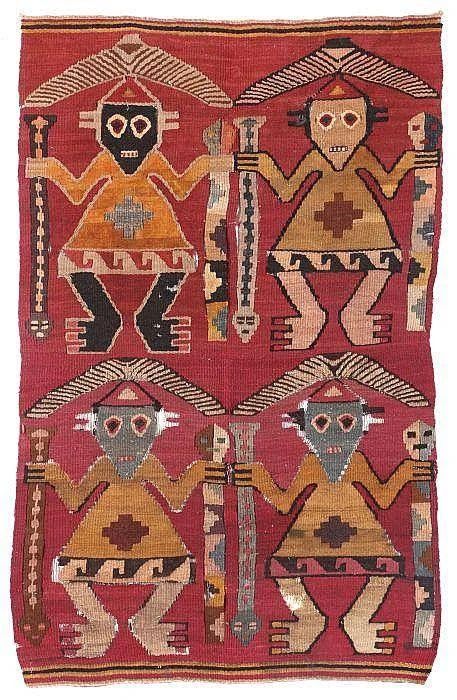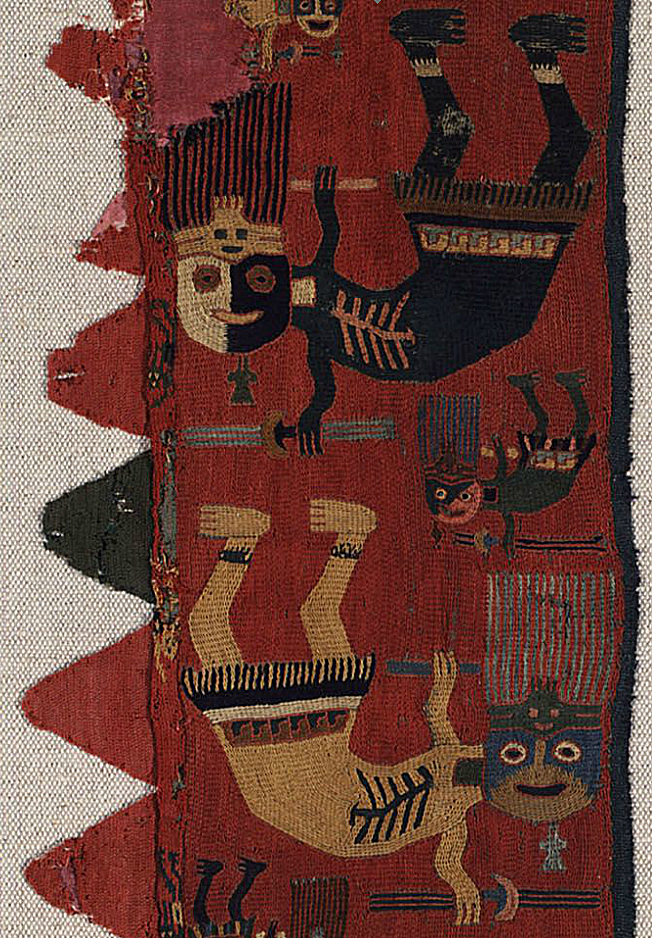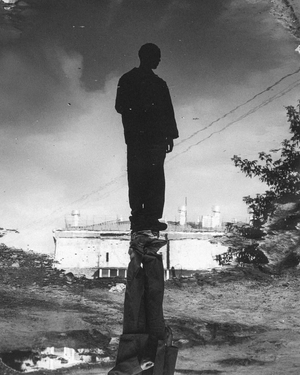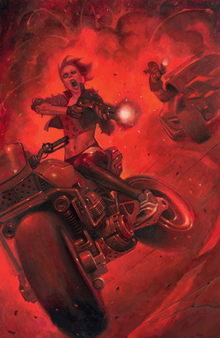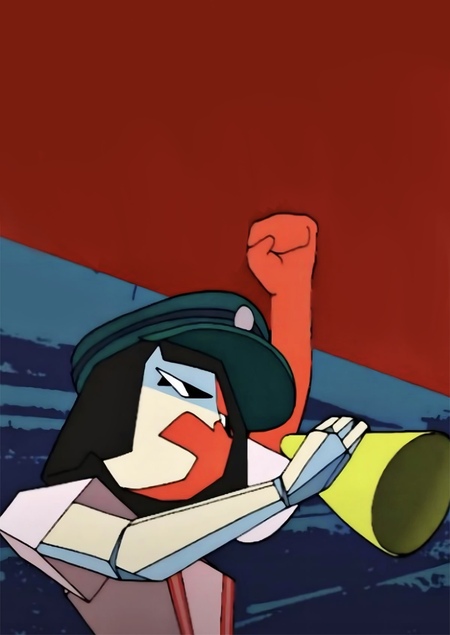
Visual narration of ENA «Dream BBQ»
Rubricator
1. What is Ena? 2. The feeling 3. Narration through design 4. What designs can tell? 5. Conclusion 6. Bibliography 7. Image sources
ENA. You might have heard this name before, especially if you, like me, are interested in indi-animation. ENA is a surreal animated series created by Joel Guerra, a very talented animator from Peru, and other great animators and voice actors.
The series, which debuted in May 2020, is an absurd collage of themes, characters, and ideas that is centered around the everyday life of ENA, the main character. There was also a game that came out in March 2025, called «Dream BBQ», that is kind of an alternative story in the same universe. Like many others, I find this world, the world of ENA, to be very inspiring. Both the game and animated series are filled with pure absurdity and visual references to various works of art, games, and films.
But I wonder, is there more meaning behind references in design choices, rather than just an easter egg? That’s the question I will try to answer today. To be clear, my main focus will be on the first chapter of the game «Dream BBQ», while the animated series will be touched briefly.
What is ENA?
As I said earlier, animated series focus on the everyday life of ENA. There are three episodes: Auction Day, Extinction Party, and Temptation Stairway. The game is standing aside for the main narrative. We see life of different ENA, which makes «ENA» not one particular person, but rather a species.
The plot of the game revolves around ENA trying to find the Boss. In Chapter 1, ENA needs to remove the smoke inhibiting access to the boss. To do so, she traverse through the lonely door to find the Genie and ask him to remove the smoke. The game progresses in two routes, that of the lost witch and that of the purge event. Regardless of the route taken, ENA finds the Genie, who shows her memories of ENA destroying the smoke machine, causing main character to become trapped in the lonely door.
Some people find the plot of «Dream BBQ» to be very absurd, but I think that it isn’t completely true. Even though I am not the creator and anyone can interpret this art piece as they see fit, I will try to explain some theories from a design standpoint.
Design in any medium plays an important role, especially if you try to tell a story. Thoughtful character and background design can help the author create an amazing, unforgettable world that can engage the viewer from the first seconds. The same way with the plot. Sometimes authors seek the answers to important questions from the viewer, so they can experience the story from the eyes of a detective. That way, the author never tells you the story directly, but through visual hints. I think that ENA «Dream BBQ» is one of the most noticeable examples of storytelling through images.
The feeling
The world of ENA is filled with obscure characters and dream-like locations, inspired by surrealistic painters such as Salvador Dali and Zdeslav Becsinsky, whos impact can be seen in animated series. Besides the art-history resemblance, it is clear that artists were inspired by liminal spaces and old PS1 games, like «Link: The Faces of Evil» and known within a niche community Osamu Sato’s «LSD: Dream Emulator».
Also, one of the first locations in the game has a very specific visual that reminds me of a painting by Toshiko Kihara, a survivor of the Hiroshima catastrophe, called 'This A-bomb drawing'.
All of those things combined somehow give you a sense of something familiar, even nostalgic. You feel as though you’ve seen it before, but at the same time, it’s like nothing else you’ve ever seen.
Narration through design
In both iterations, our protagonist is a woman-like creature with the body divided into two colors. In animated series it is blue and yellow, being her sad and happy parts while in game it’s blueish white and red, meany and businesswoman parts. Both of those designs heavily inspired by Pablo Picasso’s painting «Girl before a mirror» (March 1932). Leitmotiv of this painting is a rethought approach towards the theme of finding your inner self.
Pablo Picasso «Girl before mirror», 1932
This dual design of ENA not only helps us to understand different emotional states of the protagonist, but it also helps build an inner conflict between the main character’s actions and desires. In Dream BBQ we can see this in the end of the chapter, when the Genie, Theodora, tells ENA, «…Your mind seems to be in conflict with the letters it spits out. Worries and fears will only betray your true goals, ƎNA…».
Theodora’s design is based on some cat-like creatures from images of Paracas textiles. Paracas culture was an Andean society existing between approximately 800 BCE and 100 BCE, located in what today is the Ica Region of Peru. Paracas people used those textiles to wrap around mummified bodies. Mostly textiles depict shamans and gods, which are supposed to help souls enter the world of spirits.
Paracas textiles 800BCE — 100BCE
Taski Maiden is also based on Paracas designs, as well as fish-like creatures with human limbs, who is called by archeologists «Paracas double fish», who apparently was an important god in Paracas pantheon. Another interesting character, whose design is based on attributes of Peruvian culture, is Mitu, whose name is a nanogram for Tumi — a ritual knife that was used to make an animal sacrifice to the god of the sun, Inti. What’s interesting, is that both double fish and Mitu can be met during the Purge Event of the game, the key event to one of the routes.
There are a few more characters, I’d like to mention, one of them is being Shoryo, whose design is based on shōryō uma (or «spirit horses»). Odon is a ceremony held in late summer when the Japanese offer thanks and respect to their dead ancestors. People in Japan believe that their ancestors’ souls can travel back to our world at this time. Some households shape small cows or horses called shōryō-uma out of vegetables and place these in the family altar so that their returning ancestors may travel more comfortably.
Continuing the theme of death, we have four old ladies, the witches, who appear to be dead. There is also Coral glass, whose coral part appears to be an homage towards green-banded broodsac, a parasite, that infect snails and Spatulady, whose design based on character from «Destino», a collaborative project between Salvador Dali and Disney animations.
What designs can tell?
Despite the surreal nature of the plot of ENA «Dream BBQ», there are a certain themes that can tell us a lot about this world. From my previous analysis, there seems to be a certain connection to the themes of death. I think that the world of ENA is the world of afterlife, or, at least, the world of gods and spirits.To support my theory, I have a very interesting fact. The main screen of the game seeks close connections towards textiles of Paracas as well as some characters. As I said earlier, those textiles were used to be wrapped around mummified bodies, to help them travel to the world of spirits. So, maybe, by entering the game we actually enter the world of the dead.
Taken in account my previous discussion about meaning of some characters, this theory seems to be not far from the truth.
Conclusion
Of course, like any good pice of art, everything in ENA «Dream BBQ» made with care and attention to details. And every aspect of character or background design carries its own storytelling purpuse. Despite looking like an abstract mosaic of images, each of them carries an idea, that you can find after a closer inspection. This once again demonstrates that even the most absurd things, which may seem like an illogical Easter egg, can have their own fascinating story, which can enhance our understanding of the world.
In conclusion, I’d like to say that those cluese were made only from design point of view, without any analisis of the plot, which points out the high level of visual development of the game.

